by Lorri | Jun 9, 2010 | UnCorked
On a recent flight a gentleman and I had an informative discussion about wine.
We didn’t delve into the layers of French wine laws or vintage variations but instead talked about a common wine buying frustration.
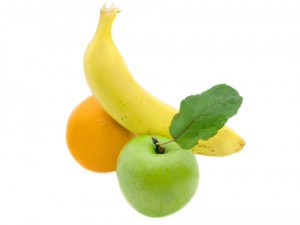 My wine-buying confidence quickly goes downhill when the brands are nowhere to be found and I am once again staring at a sea of bottles.”
My wine-buying confidence quickly goes downhill when the brands are nowhere to be found and I am once again staring at a sea of bottles.”
His topic is one shared by many, walking into wine shops with a few suggestions from friends and wines enjoyed in the past and not being able to find a single one from the list.
With modern winemaking technology and aggressive buying strategies by distributors and retailers, chances are that there will be few atrocious styles on shelves for the consumer to purchase.
But for guidance, start with the obvious by seeking advice from a wine specialist. The advantage of shopping at a reputable wine retailer is it ensures someone will be available to confidently guide you to a style or brand similar to the one you are seeking.
But if you find you are sorting through the selections alone, remember one of the most important wine-buying strategies: Grapes grown in the same region will generally have similar style profiles.
Grapes — like apples, oranges and bananas — excel in certain growing regions of the world. It’s not often you see oranges growing in Maine; the same is true for cabernet sauvignon in Germany. Neither place has the ideal temperatures for the respective products. Searching similar wine styles is easier when you put to memory a few of the benchmark places in the world where wines (barring poor winemaking) rarely disappoint. Once your confidence in dependable regions and brands is sorted, the sea of bottles will not be as overwhelming. This simple strategy will instill instant confidence in your approach to buying. The less expensive wines will almost always have a substitution in the same price range and region. Finding premium wines with similar taste can be more challenging, simply because it’s the winemaker’s technique, style and expression that make a wine unique.
Sauvignon Blanc: Loire Valley and Bordeaux, France; New Zealand; Chile; California
THE VALUE
- 2009 Monkey Bay Sauvignon Blanc, New Zealand (about $12 retail)
THE SPLURGE
- 2008 Pascal Jolivet Attitude Sauvignon Blanc, France (about $28 retail)
Chardonnay: Burgundy, France; Australia; Chile; California; Oregon; Washington
THE VALUE
- 2009 Beringer Vineyards Founders Estate Chardonnay, California (about $10 retail)
THE SPLURGE
- 2009 Clos Du Val Carneros Chardonnay, California (about $30 retail)
Riesling: Germany; Alsace, France; California
THE VALUE
- 2008 Twisted River Riesling, Germany (about $14 retail)
THE SPLURGE
- 2007 Leonard Kreusch Riesling Estate Bottled, Germany (about $22 retail)
Pinot Noir: Burgundy, France; New Zealand; Oregon; California
THE VALUE
- 2008 Mark West Pinot Noir, California (about $15 retail)
THE SPLURGE
- 2008 Willamette Valley Vineyards Estate Pinot Noir, Oregon (about $52 retail)
by Lorri | Jun 2, 2010 | UnCorked
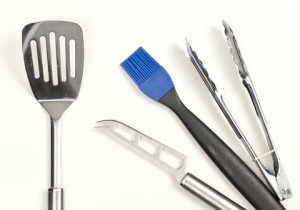 For many of us the best thing about summer is cooking on the grill. It takes us out of the kitchen and onto the deck, creating a casual atmosphere. Our selection of wines also goes casual, complementing the flavors of the grill.
For many of us the best thing about summer is cooking on the grill. It takes us out of the kitchen and onto the deck, creating a casual atmosphere. Our selection of wines also goes casual, complementing the flavors of the grill.
Matching wines to grilled food is relatively simple. There is usually a protein with a rub, sauce, spice or marinade as the main seasoning. To compete with the smoky, bold flavor of the grill most of these seasonings are robust. Think about full-bodied wines able to contend with the strong flavors, such as merlot, cabernet sauvignon, malbec, shiraz, carmenere or zinfandel. If your grilled items are light on seasoning or are vegetarian, consider chardonnay, sauvignon blanc and pinot grigio for ideal accompaniments.
Another plus for summer grilling is you won’t need to splurge. Because the wines will likely be competing with smoke from the grill and the scent of much-needed mosquito repellent, less complex wines work best. Check out regions known for bargains like Chile, Argentina, California and Australia.
THE VALUES
- 2007 Tamas Double Decker Red, California (about $9 retail)
- 2008 Santa Rita Cabernet Sauvignon, Chile (about $13 retail)
- 2007 Gnarly Head Cellars Zinfandel, California (about $14 retail)
- 2007 Ventisquero Carmenere, Chile (about $13 retail)
- 2008 Lindemans Bin 45 Cabernet Sauvignon, Australia (about $10 retail)
- 2009 Cupcake Sauvignon Blanc, California (about $12 retail)
- 2007 La Playa Estate Cabernet Sauvignon, Chile (about $11 retail)
- 2008 Wyndham Estate Bin 555 Shiraz, Australia (about $15 retail)
by Lorri | May 30, 2010 | Lorri's Wine Diary
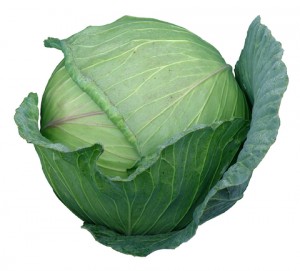 Bratwursts were the meat of choice for us this past holiday weekend and a few sides to make them even tastier. All was going exceedingly well until the clash of the sensories!
Bratwursts were the meat of choice for us this past holiday weekend and a few sides to make them even tastier. All was going exceedingly well until the clash of the sensories!
Not sure where to lay the blame, but I am almost positive it was with the kraut and the sauvignon blanc. I’m not sure sauerkraut pairs heavenly with any wine, but I will definitely explore this a bit closer on our next bratwurst grilling adventure.
Let me know if you have any thoughts.
by Lorri | May 26, 2010 | UnCorked
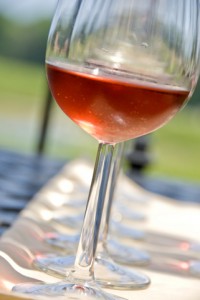 As the summer temperatures rise, it’s time to consider changing our wine-buying strategies. It’s second nature for most of us to adjust the foods we eat as the seasons change, but many forget wines also have a seasonal lure.
As the summer temperatures rise, it’s time to consider changing our wine-buying strategies. It’s second nature for most of us to adjust the foods we eat as the seasons change, but many forget wines also have a seasonal lure.
Heavy red wines were the ideal matches for stews and low (outside) temperatures but summer’s heat calls for light and refreshing wines.
Coinciding your wine selection with the changing menus of summer isn’t as complicated as it may sound. In warmer weather, we tend to move outside for grilling, throw together simple salads and keep side dishes to minimally prepared fresh fruit and vegetables.
Summer wine selections reflect these changes as well with bubbles, crisp acidic citrus flavors in whites and the strawberry and spice of light-bodied reds.
Fresh and Crisp — Sauvignon Blanc, Pinot Grigio, Riesling
THE VALUE
- 2009 Casa Lapostolle Sauvignon Blanc, Chile (about $13 retail)
THE SPLURGE
- 2009 Sbragia Family Vineyards Dry Creek Sauvignon Blanc, California (about $20 retail)
Aromatic and Refreshing — Viognier, Gewurztraminer, Semillon, Chardonnay
THE VALUE
- 2009 Pine Ridge Viognier/Chenin Blanc, California (about $14 retail)
THE SPLURGE
- 2007 Olivier Leflaive Chablis Les Deux Rives, France (about $29 retail)
Light and Fruity — Pinot Noir
THE VALUE
- 2008 Silver Ridge Pinot Noir, California (about $9 retail)
THE SPLURGE
- 2008 Villa Maria Estate Private Bin Pinot Noir, New Zealand (about $28 retail)
by Lorri | May 19, 2010 | UnCorked
 Pairing wine and fish continues to be woefully misunderstood. The old notion of only “white wines with fish” continues to sow confusion. It’s important to remember that not all fish is created equal, so consider a few tips to finding the perfect match.
Pairing wine and fish continues to be woefully misunderstood. The old notion of only “white wines with fish” continues to sow confusion. It’s important to remember that not all fish is created equal, so consider a few tips to finding the perfect match.
As with all wine pairings, start with the “weight” of the food. We aren’t referring to pounds and ounces but to the richness, texture and fat. Consider the many types of seafood and the array of textures and weights. You can compare the hearty weight of salmon, tuna or sea bass to lighter filets of flounder or tilapia, or the rich taste of lobster versus the delicacy of an oyster or scallop.
The seafood can also change weight depending on the sauces or toppings accompanying the dish. Pairing a bare oyster with champagne is ideal, but the same wine will not compete with the rich and powerful Oysters Rockefeller.
The cooking method can also influence the choice of wine. Sauces that use a cream base will need a wine with high acidity to compete. Rose, Rieslings and sauvignon blanc all have the acidic backbone to withstand the richness of the cream. Fried seafood needs a wine that cuts through the oil and batter: think chardonnay, sauvignon blanc or semillon.
Crab: Riesling or chardonnay
- 2009 Jacobs Creek Reserve Riesling, Australia (about $15 retail)
Salmon: Pinot noir or pinot gris
- 2008 Gnarly Head Pinot Noir, California (about $12 retail)
Striped Bass: Merlot or chardonnay
- 2008 Yalumba Y Series Merlot, Australia (about $13 retail)
Lobster: Chardonnay or pinot noir
- 2008 Spann Vineyards Chardonnay/Viognier, California (about $20 retail)
Mahi Mahi: Pinot noir or semillon
- 2008 Peter Lehmann Semillon, Australia (about $13 retail)
Oysters: Champagne or unoaked chardonnay
- 2008 Chandon Unoaked Chardonnay, California (about $20 retail)
Mussels: Riesling or albarino
- 2008 Martin Codax Albarino, Spain (about $18 retail)
by Lorri | May 12, 2010 | UnCorked
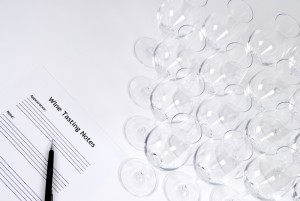 It’s the time of year when wine enthusiasts are given a rare opportunity to expand their horizons by leaps and bounds, all in the name of a good cause – local fundraising benefits with wine-tasting events.
It’s the time of year when wine enthusiasts are given a rare opportunity to expand their horizons by leaps and bounds, all in the name of a good cause – local fundraising benefits with wine-tasting events.
Large tastings often leave most of us overwhelmed and confused. Don’t be intimidated by the amount of wines or feel compelled to taste each one. Most tasters will be able to explore and differentiate some 20 wines before their taste buds become tired.
There are many ways to take advantage of the wines being offered at one event. Rather than drifting from tasting sample to tasting sample, explore by regions, price or grape varieties. If you enjoy chardonnay, compare this grape in different regions and prices or find your own theme to explore in the sea of wine samples.
Keep track of what you’ve tasted by taking notes on your event program. You are the only person reviewing them, so there’s no need for fancy wine speak. Notes can be as simple as a check mark for favorites, a dollar sign for great values and explanation points beside exceptional wines.
I have said it many times, and it always needs repeating: If you take any words of wine tasting advice, it would be to spit, and spit often. The purpose of large wine events is tasting and not drinking.
DATES TO REMEMBER
- Wild Wines of the World, 7 p.m. Saturday, Little RockZoo, 1 Jonesboro Drive, Little Rock, (501) 661-7208
- Art of Wine Festival, multiple events, June 10-12, Walton Arts Center, 495 W. Dickson St., Fayetteville (479) 443-5600
- 12th Annual KUAF Wine Tasting, 5:30 p.m. June 17, Second Street Live, 711 Garrison Ave., Fort Smith, (479) 648-3993
 My wine-buying confidence quickly goes downhill when the brands are nowhere to be found and I am once again staring at a sea of bottles.”
My wine-buying confidence quickly goes downhill when the brands are nowhere to be found and I am once again staring at a sea of bottles.” For many of us the best thing about summer is cooking on the grill. It takes us out of the kitchen and onto the deck, creating a casual atmosphere. Our selection of wines also goes casual, complementing the flavors of the grill.
For many of us the best thing about summer is cooking on the grill. It takes us out of the kitchen and onto the deck, creating a casual atmosphere. Our selection of wines also goes casual, complementing the flavors of the grill. Bratwursts were the meat of choice for us this past holiday weekend and a few sides to make them even tastier. All was going exceedingly well until the clash of the sensories!
Bratwursts were the meat of choice for us this past holiday weekend and a few sides to make them even tastier. All was going exceedingly well until the clash of the sensories! As the summer temperatures rise, it’s time to consider changing our wine-buying strategies. It’s second nature for most of us to adjust the foods we eat as the seasons change, but many forget wines also have a seasonal lure.
As the summer temperatures rise, it’s time to consider changing our wine-buying strategies. It’s second nature for most of us to adjust the foods we eat as the seasons change, but many forget wines also have a seasonal lure. Pairing wine and fish continues to be woefully misunderstood. The old notion of only “white wines with fish” continues to sow confusion. It’s important to remember that not all fish is created equal, so consider a few tips to finding the perfect match.
Pairing wine and fish continues to be woefully misunderstood. The old notion of only “white wines with fish” continues to sow confusion. It’s important to remember that not all fish is created equal, so consider a few tips to finding the perfect match. It’s the time of year when wine enthusiasts are given a rare opportunity to expand their horizons by leaps and bounds, all in the name of a good cause – local fundraising benefits with wine-tasting events.
It’s the time of year when wine enthusiasts are given a rare opportunity to expand their horizons by leaps and bounds, all in the name of a good cause – local fundraising benefits with wine-tasting events.